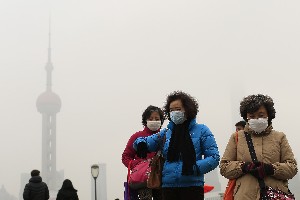
SHANGHAI: China could impose “special emissions restrictions” on industrial firms in as many as 80 cities, extending the programme from the current 28, an environment ministry spokesman said.
China said in January that it would force industrial firms in 28 northern Chinese cities to meet tough new emissions curbs in a bid to cut smog in the heavily polluted Beijing-Tianjin-Hebei region.
Enterprises in the thermal power, steel, petrochemical, chemical, non-ferrous metals and cement sectors will be forced to comply with as many as 25 new emissions standards by October, with coking coal producers given another year to make the required adjustments.
But some have expressed concern that the tougher emissions restrictions would undermine efforts to create a level playing field, raising production costs and making it harder to compete with rivals in other regions.
“As China increases curbs on emissions, I believe the measures will be expanded to more regions,” said Tian Weiyong, head of environmental inspections at the Ministry of Ecology and Environment.
“But we might start with tighter emission standards in the 80 cities,” he said.
China’s new three-year smog action plan will cover the major coal-producing regions of Shanxi and Shaanxi as well as the major manufacturing regions of Beijing-Tianjin-Hebei and the Yangtze river delta.
Inspectors will target small-scale, “scattered” coal users in Shanxi and Shaanxi, two major coal-producing regions, Tian said.
China has promised to end a “one size fits all” approach to curbing smog and will impose production curbs only on firms that fail to meet emission standards.
Tian of the environment ministry said China would also begin a round of inspections to ensure natural gas supplies are sufficient in northern China this winter.
Regulators are desperate to avoid a repetition of the fuel shortages that hit large parts of the region last winter, as overzealous officials rushed to comply with directives to convert from coal to cleaner-burning gas.

